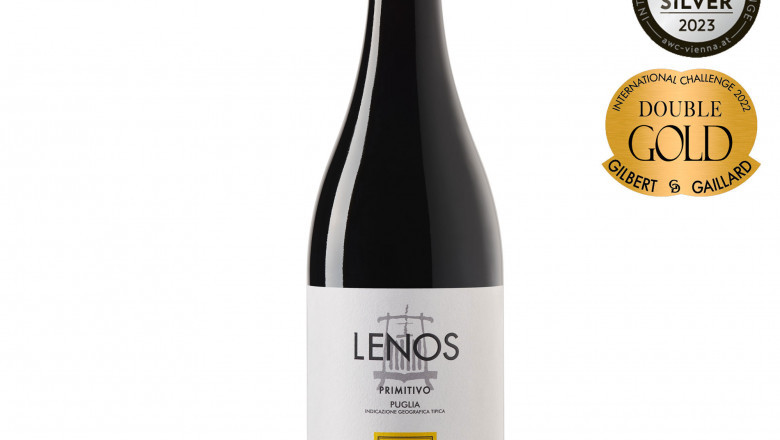views
Primitivo Wine Made By Harvesting And Fermentation
If you're a fan of bold red wines with rich flavors, there's one name you absolutely need to know: Primitivo. This delicious red wine may not be as famous as Cabernet Sauvignon or Merlot, but it's quickly rising in popularity — and for good reason. In this blog post, we'll explore everything you need to know about Primitivo wine, from its origins and flavor profile to how it's made and why it's so special. Whether you're a seasoned wine lover or just getting started, this easy guide will help you understand and enjoy Primitivo like a pro.
What Is Primitivo Wine?
Primitivo is a red wine made from the Primitivo grape, a dark-skinned variety known for producing wines with high alcohol, deep color, and intense fruit flavors. It’s most commonly grown in Southern Italy, especially in the region of Puglia (the heel of Italy’s boot). The name "Primitivo" comes from the Latin word primativus, meaning “early ripening,” which refers to how quickly the grape matures on the vine.
While Primitivo is Italian by name and popularity, its roots actually trace back to a Croatian grape called Crljenak Kaštelanski, which also happens to be the same grape as Zinfandel, a popular variety in California. That’s right — Primitivo wine and Zinfandel are essentially the same grape! However, due to differences in climate, winemaking traditions, and terroir, the wines they produce have some noticeable differences.
What Does Primitivo Wine Taste Like?
Primitivo wine is bold, rich, and full-bodied, with a flavor profile that appeals to many red wine drinkers. Here's what you can typically expect:
- Fruit Flavors: Ripe blackberries, cherries, raspberries, and plums.
- Spice Notes: Hints of black pepper, cinnamon, and sometimes clove.
- Other Characteristics: Depending on how it’s aged, you may also notice vanilla, tobacco, or chocolate notes, especially if it’s been matured in oak barrels.
Because of its high sugar content, Primitivo grapes often create wines with higher alcohol levels (usually around 14% to 16%), giving them a warming sensation and a slightly sweet finish, even in dry versions.
Where Is Primitivo Grown?
The most famous region for Primitivo wine is Puglia (Apulia) in southern Italy. Within Puglia, some of the top areas include:
- Primitivo di Manduria DOC: Known for producing some of the richest and most intense Primitivo wines.
- Gioia del Colle DOC: A slightly cooler region that makes more elegant and balanced styles.
- Salento IGT: Offers a wide variety of styles at often more affordable prices.
Outside of Italy, you can also find Primitivo-style wines in California (as Zinfandel), Croatia, and even Australia, but they might be labeled differently.
How Is Primitivo Wine Made?
Winemakers love working with Primitivo because of its concentrated flavor and natural sweetness. Here’s a quick overview of how it’s typically made:
- Harvesting: Grapes are usually harvested early due to their fast ripening. Some producers allow partial raisining (natural drying) on the vine to concentrate flavors.
- Fermentation: Grapes are crushed, and the juice is fermented with skins to extract color and tannins.
- Aging: Wines can be aged in stainless steel (for fresher styles) or oak barrels (for deeper, spicier flavors). Aging can last from a few months to several years.
- Bottling: Once matured, the wine is filtered and bottled, ready to be enjoyed or aged further in the bottle.
Food Pairings for Primitivo
Primitivo’s richness and intensity make it a perfect match for hearty dishes. Here are some tasty pairings:
- Grilled or roasted meats: Think steak, lamb, or barbecue ribs.
- Pasta with red sauce: Especially with spicy sausage or meatballs.
- Aged cheeses: Such as Parmigiano-Reggiano or Pecorino.
- Pizza: Especially those with rich toppings like pepperoni, mushrooms, or truffle oil.
Its bold nature also makes Primitivo a great wine for sipping on its own, especially on a cool evening.
Why Should You Try Primitivo?
There are plenty of reasons to fall in love with Primitivo:
- Affordable Luxury: Compared to other full-bodied reds, Primitivo offers excellent quality at lower prices.
- Flavorful and Easy to Enjoy: Its rich fruit and spice make it crowd-pleasing and food-friendly.
- Versatile Styles: From fresh and fruity to deep and complex, there’s a Primitivo for every taste.
Plus, if you already enjoy wines like Zinfandel, Syrah, or Malbec, you’ll likely find Primitivo just as delightful — if not more!
Final Thoughts
Primitivo wine is a hidden gem in the world of red wines. With its bold character, juicy fruit flavors, and deep roots in southern Italy, it offers both tradition and taste in every glass. Whether you’re discovering it for the first time or adding it to your regular rotation, Primitivo is a wine that deserves a spot in your collection.
So next time you’re browsing the wine aisle or planning a dinner party, pick up a bottle of Primitivo. Your taste buds will thank you.






















Comments
0 comment